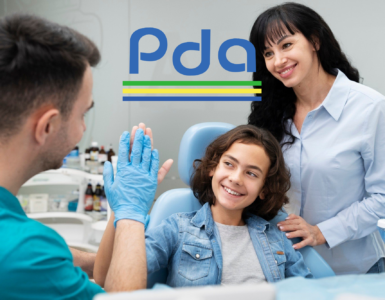The healthcare industry has undergone significant transformation recently, driven by technological advancements. One key area where technology is making a profound impact is clinical documentation. During a presentation at the IHIMA conference, Dr. Gerry Petratos highlighted the pivotal role of automation in clinical documentation integrity, shedding light on how it can enhance efficiency, reduce burdens on providers, and improve the overall quality of patient care.
Reducing the Burdens of Time and Access
Traditional clinical documentation processes are often time-consuming and require providers to spend substantial time responding to queries and entering data into electronic health records (EHRs). Dr. Petratos explained that automated systems could significantly alleviate these burdens. By leveraging automation, providers can handle multiple queries in minutes rather than hours. Reduced time spent on documentation tasks allows healthcare professionals to focus more on patient care, ultimately leading to better health outcomes.
Enhancing Efficiency through Smart Communications
One of the most compelling aspects of automation in clinical documentation is the implementation of more innovative communication systems. Dr. Petratos highlighted how these systems can interact with providers while documenting patient notes and offering suggestions and prompts without being intrusive. This approach prevents overburdening providers with too many queries, reducing alert fatigue—a common issue in healthcare settings where providers deal with numerous alerts and notifications.
Automated systems enable providers to make informed decisions in real time by providing suggestions nonintrusively. For instance, while a provider is documenting a patient’s visit, the system might suggest additional relevant information that could enhance the completeness and accuracy of the record. Providers can respond to these suggestions immediately or revisit them later, ensuring their workflow remains uninterrupted.
Balancing Mandates and Flexibility
A crucial aspect of automated clinical documentation systems is their design, which avoids “hard stops” that mandate immediate responses. Modern computerized systems are more suggestive than traditional EHR alerting systems, often requiring providers to address alerts before proceeding. This design allows providers to acknowledge the advice and choose when to act on it, either during their next patient interaction or from their task lists. This flexibility not only enhances the efficiency of healthcare delivery but also ensures that providers feel safe from mandatory interruptions.
Improving Accuracy and Completeness
Automation in clinical documentation plays a vital role in enhancing the accuracy and completeness of patient records. Automated systems help capture all relevant information during documentation by providing timely suggestions and prompts. This comprehensive approach reduces the likelihood of missing critical data, which can be crucial for patient care and clinical decision-making. Additionally, accurate and complete documentation is essential for meeting administrative and regulatory requirements, further underscoring the importance of automation in this domain.
Continuous Improvement through Feedback Loops
Dr. Petratos emphasized that the future of healthcare documentation lies not just in data collection but in creating feedback mechanisms that enable continuous learning and adaptation. By integrating feedback loops into clinical workflows, healthcare systems can ensure that documentation practices evolve and improve over time.
The Power of Feedback
Feedback loops are essential for continuous improvement in any system, and clinical documentation is no exception. By analyzing documentation data and identifying patterns and trends, healthcare organizations can gain valuable insights into areas that need improvement. The insights will refine documentation practices, enhance provider training programs, and implement more effective documentation tools.
Leveraging Machine Learning for Better Outcomes
One of the most exciting developments in automation and clinical documentation is using machine learning algorithms. Dr. Petratos discussed how machine learning can analyze vast amounts of clinical data to identify patterns and make predictions that enhance documentation practices. For example, machine learning algorithms can identify common documentation errors and provide real-time feedback to providers, helping them avoid these mistakes in the future. This proactive approach to documentation improves the quality of patient records and enhances clinical outcomes by ensuring that providers have access to accurate and complete information.
Empowering CDI Teams with Data-Driven Models
Clinical Documentation Integrity (CDI) teams play a crucial role in ensuring the accuracy and completeness of patient records. Dr. Petratos highlighted how automation and data-driven models can empower CDI teams to perform their duties more effectively. By providing CDI teams with access to advanced analytics and machine learning tools, healthcare organizations can enhance their ability to identify documentation gaps, ensure compliance with regulatory requirements, and support providers in delivering high-quality care.
Conclusion
Dr. Gerry Petratos’ presentation at IHIMA underscored the transformative potential of technology in enhancing Clinical Documentation Integrity. His insights into reducing alert fatigue, empowering CDI teams with data-driven models, and leveraging Machine Learning for better clinical outcomes highlight his thought leadership in the field. As healthcare continues to evolve, integrating advanced technologies and collaborative approaches will be crucial in achieving high-quality patient care and efficient healthcare delivery.
Automation in clinical documentation represents a significant step forward in improving healthcare efficiency and effectiveness. By reducing the time and effort required for documentation, enhancing the accuracy and completeness of patient records, and fostering continuous improvement through feedback loops, automation promises to revolutionize how healthcare providers manage clinical documentation. As we progress, embracing these technological advancements will be essential for delivering the highest patient care standards and ensuring healthcare systems’ long-term success.
Ready to explore how automation can transform your clinical documentation processes? Book a discovery call with Hiteks.com today and learn how our innovative solutions can enhance your practice, reduce administrative burdens, and improve patient care. Visit Hiteks.com to schedule your call now.





